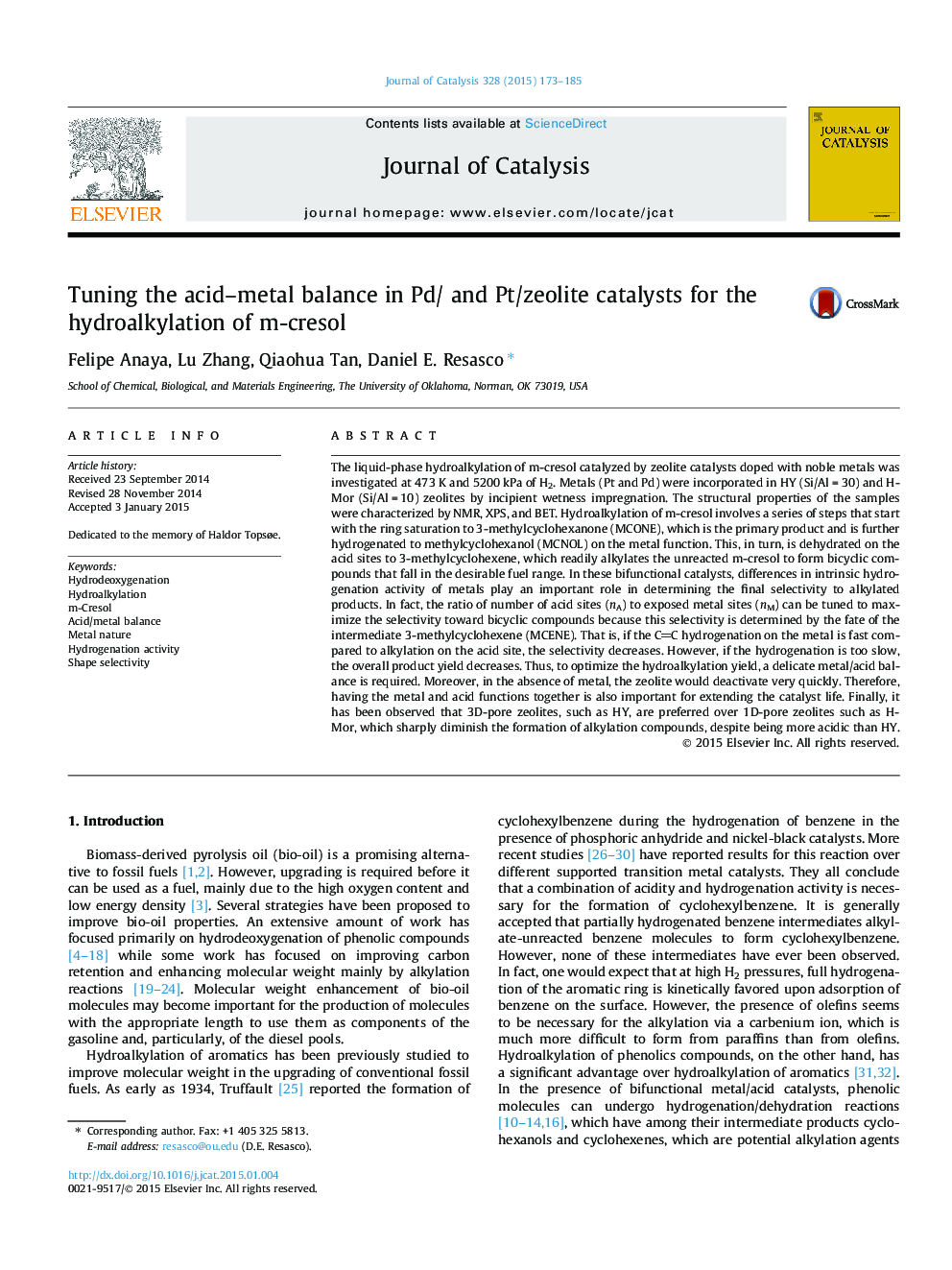| کد مقاله | کد نشریه | سال انتشار | مقاله انگلیسی | نسخه تمام متن |
|---|---|---|---|---|
| 60775 | 47547 | 2015 | 13 صفحه PDF | دانلود رایگان |

• Bifunctional catalysts with varying acid/metal ratio are effective for phenolics to diesel.
• Acid–metal balance directly affects selectivity to desirable alkylation products.
• Type of metal (Pt vs. Pd) modifies hydrogenation/alkylation balance.
• Alkylation product formation is enhanced in catalysts with 3D-pore structures such as HY.
The liquid-phase hydroalkylation of m-cresol catalyzed by zeolite catalysts doped with noble metals was investigated at 473 K and 5200 kPa of H2. Metals (Pt and Pd) were incorporated in HY (Si/Al = 30) and H-Mor (Si/Al = 10) zeolites by incipient wetness impregnation. The structural properties of the samples were characterized by NMR, XPS, and BET. Hydroalkylation of m-cresol involves a series of steps that start with the ring saturation to 3-methylcyclohexanone (MCONE), which is the primary product and is further hydrogenated to methylcyclohexanol (MCNOL) on the metal function. This, in turn, is dehydrated on the acid sites to 3-methylcyclohexene, which readily alkylates the unreacted m-cresol to form bicyclic compounds that fall in the desirable fuel range. In these bifunctional catalysts, differences in intrinsic hydrogenation activity of metals play an important role in determining the final selectivity to alkylated products. In fact, the ratio of number of acid sites (nA) to exposed metal sites (nM) can be tuned to maximize the selectivity toward bicyclic compounds because this selectivity is determined by the fate of the intermediate 3-methylcyclohexene (MCENE). That is, if the CC hydrogenation on the metal is fast compared to alkylation on the acid site, the selectivity decreases. However, if the hydrogenation is too slow, the overall product yield decreases. Thus, to optimize the hydroalkylation yield, a delicate metal/acid balance is required. Moreover, in the absence of metal, the zeolite would deactivate very quickly. Therefore, having the metal and acid functions together is also important for extending the catalyst life. Finally, it has been observed that 3D-pore zeolites, such as HY, are preferred over 1D-pore zeolites such as H-Mor, which sharply diminish the formation of alkylation compounds, despite being more acidic than HY.
Figure optionsDownload high-quality image (135 K)Download as PowerPoint slide
Journal: Journal of Catalysis - Volume 328, August 2015, Pages 173–185